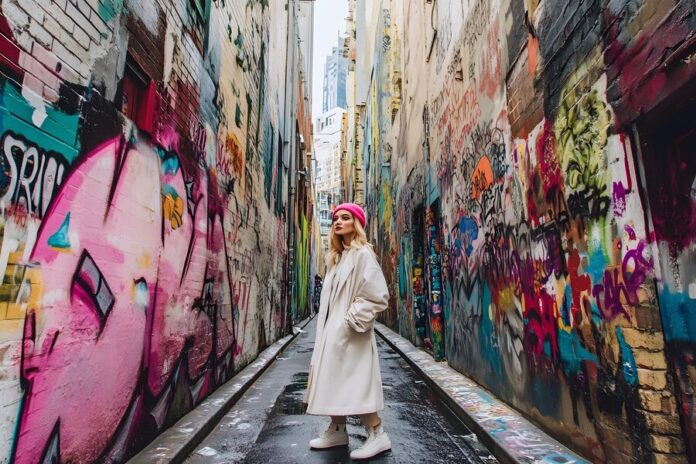Graffiti art has evolved from rebellious street scribbles to celebrated urban art, captivating the imaginations of many. From the bustling streets of New York to the historic alleyways of Paris, graffiti has left its mark on cities worldwide. For art enthusiasts, urban explorers, and travel bloggers, understanding the world of graffiti tags offers a deeper appreciation of this dynamic art form.
Introduction to Graffiti Art
Graffiti has a long and storied history, dating back to ancient civilizations. What began as simple cave paintings and inscriptions on walls has transformed into complex and vibrant urban art. The modern graffiti movement took off in the 1960s and 1970s in New York City, where artists like Taki 183 and Cornbread began tagging their names across the city, sparking a global phenomenon. Today, graffiti art is recognized as a legitimate form of artistic expression, showcased in galleries and museums around the world.
The Most Iconic Graffiti Tags
Across the globe, certain graffiti tags have achieved legendary status, becoming iconic symbols of urban art culture. In New York City, the tags of artists like Keith Haring and Jean-Michel Basquiat remain influential. Paris is known for the works of Blek le Rat, often considered the father of stencil graffiti. London’s streets boast the satirical art of Banksy, while Berlin’s vibrant graffiti scene features the tags of artists like Alias and El Bocho. These cities serve as canvases for graffiti artists who leave their indelible marks on the urban landscape.
Stories Behind the Tags
Every famous graffiti tag carries a unique story, reflecting the artist’s background, messages, and impact. Keith Haring’s distinctive chalk outlines in New York’s subways addressed social issues like AIDS and apartheid, resonating with a wide audience. Blek le Rat’s stencils in Paris were inspired by political activism, often critiquing societal norms. Banksy’s work in London combines dark humor and political commentary, challenging viewers to question authority and consumerism. In Berlin, Alias’s masked characters and El Bocho’s whimsical figures add a touch of mystery and playfulness to the city’s streets. These stories highlight the significance of graffiti art in both local and global contexts.

Exploring Graffiti Safely
For urban explorers and art lovers, discovering graffiti can be an exciting adventure. To explore graffiti safely and respectfully, start by researching popular graffiti spots in your city or destination. Guided tours are a great way to learn about the history and context of graffiti art. Always be mindful of your surroundings and respect private property. Carry a good camera or smartphone to capture the art, and consider sharing your findings on social media to promote appreciation for urban art culture.
The Legal Debate
Graffiti art often exists in a gray area between legality and vandalism. Many cities have implemented legal graffiti walls and designated areas where artists can create without fear of prosecution. However, unauthorized graffiti on public and private property remains illegal in most places. This legal debate raises questions about the balance between artistic freedom and property rights. Finding a middle ground where graffiti can coexist with city planning and property rights is an ongoing challenge.
Conclusion
Graffiti art has a profound impact on communities, transforming urban spaces into vibrant galleries that speak to the human experience. The future of urban art looks promising, with increasing acceptance and recognition of graffiti as a legitimate art form. We encourage readers to explore their cities and share their favorite graffiti tags, contributing to the appreciation and celebration of this dynamic art form. By understanding the history, stories, and legal aspects of graffiti, we can all play a part in fostering a culture that values creativity and expression.


